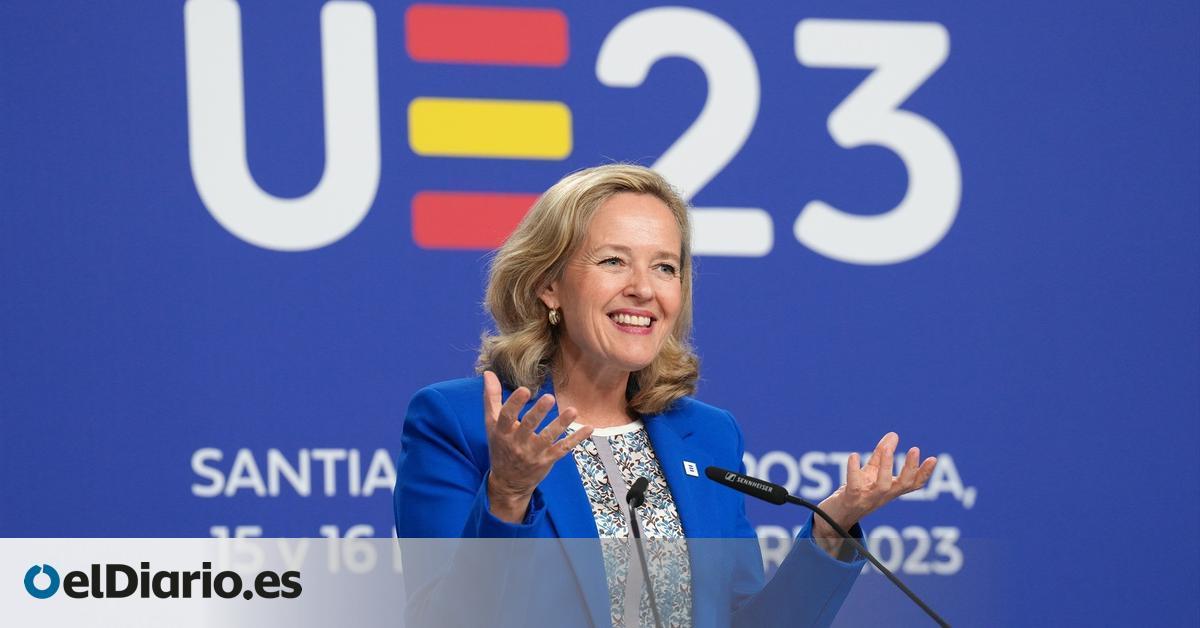
Spain’s economy grew by 0.5% in the second quarter, compared to the previous quarter, with support for family consumption and business investment from both the fall in inflation and the strength of the labor market. according to the National Accounting published by the INE (National Institute of Statistics) this Friday. This figure is one tenth higher than the first estimate, from July 28.
The Bank of Spain confirms that our economy will lead growth in Europe in 2023 and 2024
Further
The advance of our country’s GDP (Gross Domestic Product) maintains one of the highest rates in the eurozone after officially completing the COVID recovery in the summer of 2022, after Statistics revised upward the level of economic activity by 1, 5% this Monday between 2020 and 2022. This Monday, the INE has also revised the growth for the first quarter of 2023 by one tenth upwards, to 0.6%. With these new figures, GDP now exceeds the pre-pandemic level by 2%.
“The 2023 data certify that the dynamism, solidity and resilience of the Spanish economy is maintained with growth of more than 2% [interanual, respecto al año pasado]which is especially significant in a context of high international uncertainty and rising interest rates,” they defend from the Ministry of Economic Affairs.
Specifically, GDP growth in the second quarter was driven by the strength of national demand, which increased 2.3%, thanks to the positive evolution of household consumption [avanzó un 1% frente al primer trimestre] and improving investment, especially in construction and housing [aumentó un 3,6%]. The record number of Social Security affiliates and the moderation of inflation are behind these data, even despite the damage from the interest rate increases of the European Central Bank (ECB).
Likewise, the spending of companies on intellectual property stands out. [creció un 3,3%], reflecting the deployment of the Recovery Plan and the transformation of the economy, which is precisely also visible in the labor market. These high value-added investments exceed the level before the COVID shock by 8 percentage points.
The other big difference is the foreign sector, with service exports exceeding the pre-pandemic level by about 23 points. Another 20 points have highlighted tourist exports, not yet counted this last summer. The Recovery Plan and the effort in Government spending to alleviate the damage of inflation in recent months and before the social, health and economic consequences of the pandemic leave their mark on the increase in public consumption, 9.6 points above the 2019 level.
“Spain is the European economy with the highest growth and lowest levels of inflation during the last year. This good differential performance is going to be maintained in 2023 according to the most recent forecasts,” says the Ministry of Vice President Nadia Calviño.
Growth of 2.3% in 2023 as a whole, the highest in Europe
This same week, the Bank of Spain confirmed that our economy will lead growth in Europe in 2023 and 2024. The institution left the forecast for this year at an advance of 2.3%, coinciding with the improvement of the OECD and expectations of the European Commission, and reduces the next one by 4 tenths, to 1.8%. Although he remains confident that the unemployment rate will close this year at 12% and will continue to fall to 11.3% in 2025.
The new estimation exercise of the Bank of Spain does not incorporate this Monday’s upward correction of the INE’s GDP calculation until 2022, due to “lack of time” and because “we do not know the quarterly breakdown,” clarified Ángel Gavilán, general director of Economy and Statistics of the Bank of Spain.
Source: www.eldiario.es

